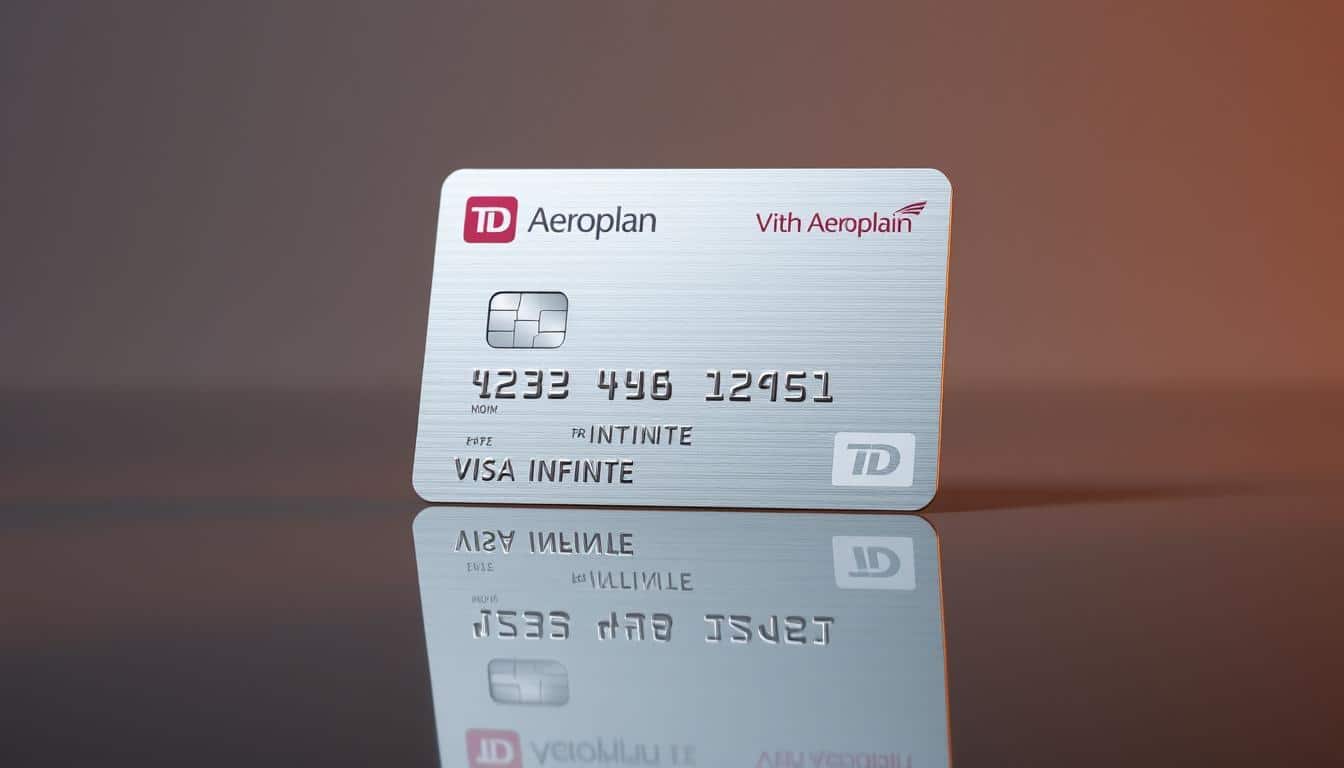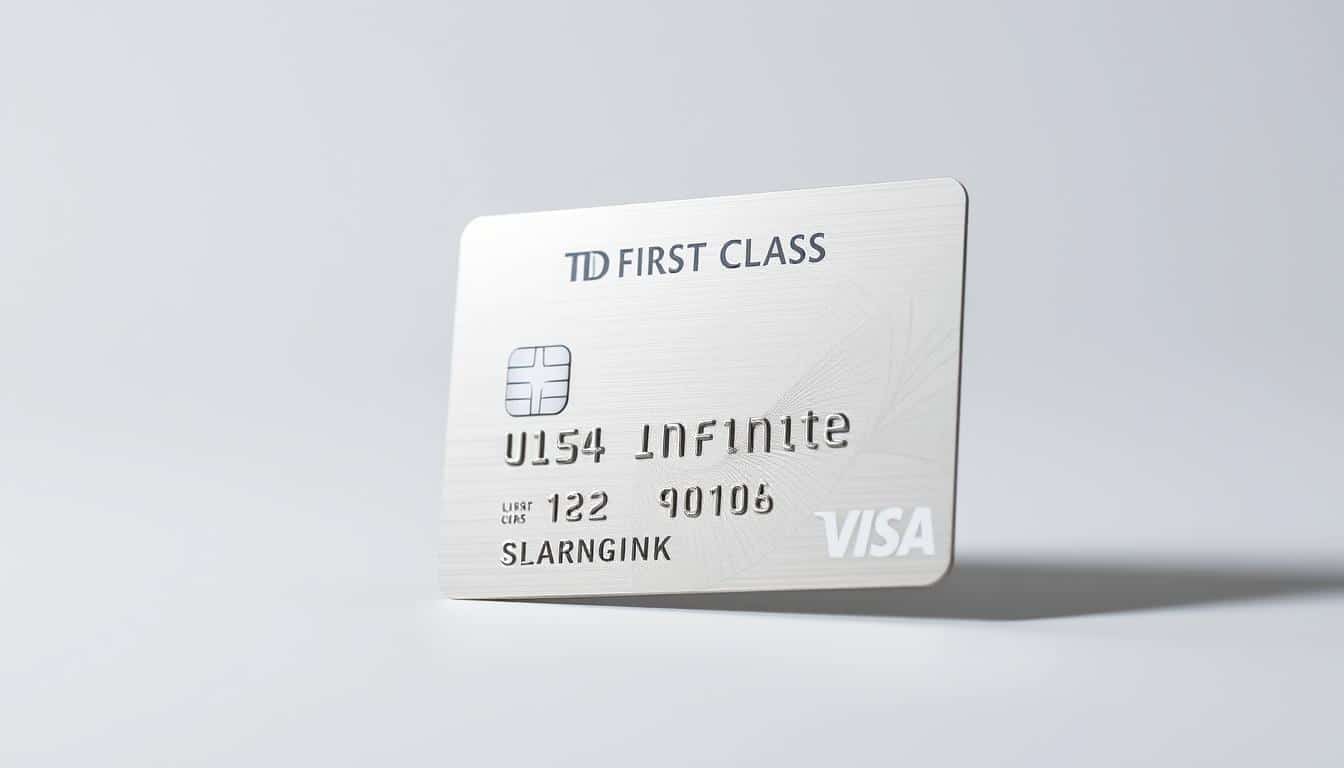The Chase Sapphire Preferred® Card is a mid‑range travel credit card built for U.S. consumers who want meaningful travel benefits without a premium price. For many, its core appeal is straightforward: a competitive welcome bonus and elevated points earning on travel and dining, paired with a modest $95 annual fee.
Anúncios
Cardmembers earn Ultimate Rewards points that are flexible and transferable to airline and hotel partners. Those points can be redeemed for flights, hotel stays, statement credits, and gift cards, which makes the Chase Sapphire Preferred® useful whether you book through Chase or move points to partners for outsized value.
This card suits casual travelers, families who take periodic vacations, and frequent flyers who want transfer partners without the higher cost of premium cards like the Chase Sapphire Reserve. In this article, you’ll get a friendly, practical deep dive into the Chase Sapphire Preferred® — from bonus travel rewards and protections to tips for maximizing Ultimate Rewards and real trip examples.
Anúncios
Key Takeaways
- Chase Sapphire Preferred® balances strong travel perks with a $95 annual fee.
- Welcome bonus and elevated travel/dining categories drive quick Ultimate Rewards earnings.
- Ultimate Rewards points are flexible: redeem directly or transfer to partners.
- Good fit for families, casual travelers, and frequent flyers seeking value.
- The article covers how to maximize points, protections included, and application tips.
Why the Chase Sapphire Preferred Card stands out for travelers
The market for travel-focused credit cards ranges from no-fee starters to high-end premium products. Entry-level cards often have low or no annual fees and basic point earning. Mid-tier travel card offerings charge a modest fee yet deliver transfer partners, stronger earning rates, and solid protections. Premium cards bring high fees, lounge access, larger travel credits, and elite perks.
Overview of travel-focused credit cards
Key differences across tiers include annual fee size, lounge access, travel credits, points earning rates, and partner transfer options. Protections such as trip cancellation, delay coverage, and rental car insurance tend to improve as you move up the tiers. When choosing among the best travel cards, think about where you travel and which benefits you will actually use.
How Chase positions the Sapphire Preferred compared to competitors
Chase positions the Sapphire Preferred as a versatile mid-tier travel card that balances a modest annual fee with meaningful benefits. It sits below Chase Sapphire Reserve, which charges a higher fee for Priority Pass access and a larger travel credit. The Preferred stands above many no-fee cards by offering Ultimate Rewards transfer partners and stronger travel protections.
Compared to American Express Green and Blue Delta, Capital One Venture, Citi Premier, and Barclays co-branded cards, the Sapphire Preferred competes on transfer flexibility and rewards for travelers who value point versatility. Its dining and travel bonus categories make it especially competitive for everyday spenders who want to earn points toward flights and hotels.
Who benefits most: casual vacationers to frequent flyers
Casual vacationers gain value from flexible points, basic protections, and a manageable fee. Frequent leisure travelers benefit from transfer partners that stretch points and open award availability. Cardholders aiming to move up to premium products find the Preferred a natural stepping stone before considering the Reserve.
Practical scenarios show the card’s strengths: booking award travel through transfer partners, earning bonus points on dining and travel purchases, and reducing out-of-pocket risk with trip protections. These features help explain why many consider the Sapphire Preferred among the best travel cards for both new and seasoned travelers.
Chase Sapphire Preferred® Card – Bonus travel rewards, $95 annual fee
The Chase Sapphire Preferred blends an attractive welcome bonus with steady points earnings on travel and dining. New applicants often see a large one-time bonus after meeting a minimum spend within the first few months. Offer size and spend threshold change over time, so check Chase’s official offer for current terms.
Breaking down the welcome bonus
Typical structure: earn a sizable lump-sum of points after spending a set amount in the initial 3 months. That bonus can cover a round-trip domestic ticket or a few hotel nights when you redeem points smartly. Keep in mind Chase may update the exact bonus and timeline.
Ongoing points earnings
This card offers elevated multipliers for travel and dining and a base rate on other purchases. Expect 2x or 3x points in bonus categories and 1x points on general spending. Chase’s definition of travel is broad and includes many transport and lodging expenses, though certain fees and purchases may be excluded. Verify eligible purchases in Chase’s terms to be sure.
Understanding the $95 annual fee and value proposition
The $95 annual fee is modest compared with premium travel cards. For many cardholders the fee is offset by the welcome bonus, category earnings, and travel protections. If you travel a few times per year or dine out regularly, the net value often exceeds the $95 annual fee.
Estimated value: redeeming points for travel vs. statement credits
Experts commonly value Ultimate Rewards value at roughly 1.25–1.5 cents per point when transferring to airline and hotel partners or booking via Chase’s travel portal. Transfer to partners for premium cabins or high-category hotel nights can yield outsized value. Booking through the Chase travel portal tends to give a fixed cents-per-point rate, which for this card may be near 1.25 cents/point. Statement credit or cash redemption typically offers lower value, often around 1 cent per point or less.
Here is a simple comparison to show how redeem points choices affect net value:
- Transfer to airline/hotel partners: potential 1.5+ cents per point for aspirational redemptions.
- Chase travel portal: roughly 1.25 cents per point for many bookings.
- Statement credit/cash: about 1 cent per point or slightly below.
Quick math: if you earn 30,000 points annually from the welcome bonus and spending, at 1.25 cents per point that equals $375 in travel value. Subtract the $95 annual fee and your net value is $280. Even at 1 cent per point via cash redemption, net value often exceeds the fee when you factor in ongoing points earnings and protections.
Use these figures as a baseline. Personal spending patterns, travel goals, and redemption choices determine real value. Track your points earnings and plan redemptions where Ultimate Rewards value is highest to make the card worthwhile.
Key travel perks and protections included with the card

The Chase Sapphire Preferred blends practical protections with smart travel perks to reduce risk and worry while you travel. Cardholders get access to a suite of policies that can reimburse losses, cover emergency services, and protect purchases made with the card. Review the Chase benefits guide before relying on any single feature.
Trip cancellation/interruption insurance explained
Trip cancellation insurance reimburses prepaid, nonrefundable travel expenses if you must cancel or cut short a trip for covered reasons. Typical covered reasons include illness, severe weather, and certain travel supplier failures. Limits vary, often shown as a per-trip maximum, and you must document losses with receipts and proof of the covered event.
To file a claim you usually submit booking receipts, medical or official reports, and evidence of the reason for cancellation. Confirm exact covered reasons, claim deadlines, and per-trip caps in Chase’s current guide so you know when the policy applies.
Baggage delay and lost luggage coverage details
Baggage delay coverage reimburses you for essential items when checked or carry-on bags are delayed beyond a set period, commonly six hours. Reimbursement comes with daily and per-trip limits and requires receipts for purchased essentials like toiletries and clothing.
Lost luggage coverage typically reimburses for checked baggage that is lost or stolen, up to specified limits per passenger. Exclusions may apply for high-value items or unattended bags. Keep all airline reports and purchase receipts and file claims promptly to meet documentation requirements.
Primary rental car insurance and other roadside benefits
Primary rental car insurance acts as a collision damage waiver when you decline the rental company’s CDW and charge the rental to the card. It can cover damage or theft up to the vehicle’s actual cash value. Some vehicle types and countries are excluded, so check limits and geographic rules before renting.
Using the card to pay for the rental and keeping the rental agreement and police reports helps with claims. Additional roadside or trip delay benefits can assist in emergencies, though coverage may differ between domestic and international travel. Always verify specifics in the Chase benefits booklet.
Below is a compact reference comparing core protections, typical triggers, and common documentation needed to file a claim.
| Protection | Typical Trigger | Common Limits | Documentation Needed |
|---|---|---|---|
| Trip cancellation insurance | Illness, death in family, severe weather, supplier bankruptcy | Per-trip reimbursement cap (varies by plan) | Invoices, proof of reason (medical records, official notices), booking receipts |
| Baggage delay coverage | Baggage delayed beyond set hours (often 6 hours) | Daily limit and per-trip maximum for essentials | Airline delay report, receipts for replacement items |
| Lost luggage coverage | Checked baggage lost or stolen by carrier | Per-person limit with item caps for valuables | Loss report from carrier, receipts, proof of ownership |
| Primary rental car insurance | Collision or theft when CDW declined and rental paid with card | Up to actual cash value; exclusions apply | Rental agreement, police report, photos of damage |
| Emergency evacuation & assistance | Serious medical emergencies abroad | Limits vary; coverage for transport to suitable facility | Medical records, invoices, incident reports |
| Purchase protection & extended warranty | Damage or theft of eligible purchases; warranty repairs | Short-term protection and extended manufacturer warranty | Receipt, claim forms, repair estimates |
These travel protections are valuable when combined with careful planning. Keep receipts, file claims promptly, and check the Chase benefits booklet for any exclusions or updates before you travel.
How to maximize points through everyday spending
Use the Chase Sapphire Preferred on routine purchases to steadily build Ultimate Rewards. Targeted use of the card in common areas of spending helps you maximize points without chasing complicated tricks. Small habits add up fast when you focus on the right categories and partner offers.
Bonus categories: dining rewards, travel, and select purchases
The card pays higher rates for dining and travel, so charge restaurants, takeout, rideshares, airfare and hotels to capture those boosts. Some merchants like streaming services or transit may qualify as select purchases, depending on merchant coding. Keep receipts and check monthly statements so merchant codes register correctly and you get the intended bonus categories.
Strategies for category stacking and rotating expenses
Start by using Sapphire Preferred for all dining and travel to lock in category benefits. When a co‑brand or store card offers a bigger bonus on a specific merchant, use that card instead and keep Sapphire for its broad travel and dining rewards. For big one-time buys and recurring subscriptions, place charges on your Sapphire Preferred if you need to meet spend targets for a welcome bonus or to collect steady points.
- Match the card to the merchant: use co‑brand cards for airline or hotel promos when those deliver more value.
- Shift nonqualifying merchants to cards that will code correctly to avoid lost bonus points.
- Plan large purchases around billing cycles and welcome bonus timing, but never overspend to chase points.
Using shopping portals and partner offers to boost points
Visit the Chase shopping portal before online purchases to earn extra Ultimate Rewards points on top of base card earnings. Activation of targeted Chase Offers in the Chase app can stack with portal bonuses for multiplier effects during sales events.
Also watch partner promos from airlines and hotels. Booking through a partner portal or combining a partner discount with a portal bonus can increase net value when you later transfer points. Registering offers and timing purchases during promotional windows gives the best chance to maximize points.
Track category rules, review statements, and keep receipts to confirm how transactions code. This prevents surprises and protects your rewards. Use these simple steps to convert everyday spending into meaningful travel value.
Transferring and redeeming Ultimate Rewards points
Transferring points opens the door to outsized value when booking flights and hotels. Before moving any balance, search for award space and compare options. Transfers are often one way, so confirm availability with the partner account first and note any carrier-imposed taxes or surcharges.
Transfer partners and ideal redemption partners for travel
Chase lists notable airline partners such as United, Southwest, British Airways, Air France/KLM, Iberia, JetBlue, Emirates, and Singapore. Hotel partners include World of Hyatt, IHG One Rewards, and Marriott Bonvoy. Hyatt frequently delivers strong hotel redemptions for fewer points. Certain airlines show sweet spots for premium cabins or regional routes, making airline partners a key source of outsized value.
Best practices for transfers to airlines and hotels
Only transfer points when you have confirmed award space. Link and verify loyalty accounts before moving transfer points. Most partners convert at a 1:1 rate, but check current ratios and minimums every time.
Watch for transfer bonuses from Chase or partners. Bonuses raise the effective value of transfer points for targeted redemptions. Keep an eye on fuel surcharges, routing rules, and carrier fees that can reduce the net benefit of an award booking.
When to use the Chase travel portal vs. transfer partners
The Chase travel portal gives a predictable cents‑per‑point redemption and quick booking with flexibility for cash‑price trips. Use the Chase travel portal when portal pricing equals or beats the expected value from a partner transfer and you need refundable or simple itineraries.
Transfer to partners when award availability and partner program value exceed portal returns, especially for premium cabins or high‑category Hyatt stays. Compare total out‑of‑pocket taxes and fees across both routes before deciding.
Keep these rules simple: confirm award space, verify transfer ratios, and compare portal value to partner value. That approach helps you squeeze maximum value from Ultimate Rewards transfer partners while avoiding costly surprises.
Application tips and approval odds for U.S. applicants
Thinking about how to apply for Chase Sapphire Preferred? Start by checking your credit profile and income. Lenders look for steady income, low credit utilization, and a history of on‑time payments. Good to excellent credit, generally FICO scores in the mid‑600s to 700s+, gives better approval odds. Keep records of employment and income handy when you complete the online form.
Credit score requirements are only part of the story. Chase reviews recent inquiries, existing relationships with the bank, and the total number of recently opened cards. If you have a high balance on other cards or many recent applications, approval odds drop. Run a soft prequalification check if you want a quick sense of chances without a hard pull.
Chase 5/24 rule affects many applicants. The guideline means Chase is likely to deny applications when five or more personal credit cards were opened in the past 24 months across any issuer. This is an internal policy, not a law, but it strongly shapes outcomes. Count new accounts before you apply and plan around that limit.
Card application timing matters. Space out major applications to avoid stacking hard inquiries. Spacing improves approval odds and reduces the chance of crossing the Chase 5/24 rule inadvertently. If you are near the 5/24 threshold, wait until older accounts pass the 24‑month mark or consider product changes with Chase instead of a fresh application.
Existing Chase cardholders have options. Product changes can let you move between certain Chase cards without a new hard pull. There are waiting periods for receiving sign‑up bonuses if you previously had the same product. Check recent account history and ask Chase customer service about eligibility before applying to avoid surprises.
Practical steps for a smoother process:
- Review credit reports for errors and correct them first.
- Keep credit utilization low across cards.
- Use soft prequalification tools to estimate approval odds.
- Save or print the terms and welcome offer requirements after you apply.
- Avoid multiple hard pulls in a short span to protect your score.
The table below compares common scenarios and how they affect approval odds and card application timing for typical U.S. applicants.
| Applicant Profile | Typical Credit Score | Key Consideration | Effect on Approval Odds | Recommended Card Application Timing |
|---|---|---|---|---|
| Fresh credit builder | 620–679 | Limited history, higher utilization | Low to moderate | Wait 6–12 months while improving score and lowering balances |
| Everyday consumer | 680–739 | Stable income, moderate history | Moderate to good | Apply when utilization under 30% and no recent new cards |
| Strong profile | 740+ | Low utilization, long credit history | High | Apply when outside the Chase 5/24 threshold or after spacing applications |
| Frequent applicant | Varies | Multiple recent opens, near 5/24 | Low | Delay applications until older accounts age past 24 months; consider product change |
Comparing Sapphire Preferred to other Chase cards and rivals
Choosing a travel card often comes down to how you value perks, fees, and flexibility. This short guide looks at Sapphire Preferred vs Reserve, highlights alternatives travel rewards from other issuers, and explains when it makes sense to upgrade Chase card or move to a different product.
Sapphire Preferred vs Reserve: the Reserve carries a much higher annual fee near $550 while the Preferred sits around $95. Reserve includes an annual travel credit, Priority Pass Select lounge access, and higher points multipliers on travel and dining. Preferred offers solid travel protection and strong transfer partners for a far lower outlay.
Break-even depends on your habits. If you use lounge access often and extract the full travel credit, Reserve can justify its fee for frequent travelers. If your travel spend and lounge visits are modest, the Preferred gives most of the same transfer flexibility at a fraction of the cost.
Alternatives travel rewards from other issuers change the field. Capital One Venture gives simple, flat-mile earning on all purchases with flexible redemption options. Citi Premier rewards many travel categories and has broad transfer partners. American Express Gold and Platinum focus on dining and premium travel perks, but sit in a different membership ecosystem and often carry higher fees.
Match card features to priorities. Pick a card for transferability when you want airline and hotel partners. Choose one for lounge access if airport comfort matters. Opt for a low-fee approach when annual costs are your main concern. This travel card comparison helps you weigh those trade-offs.
When to upgrade Chase card, downgrade, or product-change: Chase permits internal product changes in many cases, letting cardholders move between Sapphire products or to a no-fee option. Product changes typically do not trigger new welcome bonuses. Timing matters if you plan to apply later for a fresh bonus.
Contact Chase customer service before any move to confirm eligibility, expected credit line outcome, and impact on benefits. Keep in mind account age and recent approvals may affect options under the 5/24 rule or other Chase policies.
| Feature | Sapphire Preferred | Sapphire Reserve | Capital One Venture | AmEx Platinum |
|---|---|---|---|---|
| Annual fee | $95 | $550 | $95 | $695 |
| Primary strengths | Low fee, transfer partners, travel protections | Premium perks, lounge access, travel credit | Simple miles, easy redemptions | Extensive lounge network, elite travel perks |
| Lounge access | No | Yes (Priority Pass Select) | No (select options available) | Yes (Centurion, Priority Pass) |
| Annual travel credit | No | Yes | No | Yes (annual credits for travel and fees) |
| Transfer partners | Yes (Chase UR partners) | Yes (Chase UR partners) | Yes (Capital One partners) | Yes (AmEx Membership Rewards) |
| Best for | Budget-minded travelers who value transferability | Frequent travelers who use lounges and credits | Users who want flat, flexible miles | Luxury travelers seeking top-tier perks |
Real-world examples: planning a trip with Sapphire Preferred points
This section gives hands-on award travel examples and clear steps to help you plan. Start by running sample searches before you transfer points. Create accounts with United MileagePlus, ANA Mileage Club, British Airways Executive Club, Hyatt, and other partners so you can check availability and fees.
Sample travel itineraries
Transferring Chase Ultimate Rewards to United can unlock transcontinental saver awards. For example, a roundtrip economy ticket New York to Los Angeles might cost 12,500–15,000 miles one way. Business class on a partner carrier could jump to 25,000–50,000 miles each way. Confirm award availability and watch for carrier-imposed fees.
For international premium seats, transfer to ANA or Singapore Airlines. A one-way business class from the U.S. West Coast to Tokyo often shows much higher cash prices but can be booked with 75,000–95,000 miles after transfer. These award travel examples illustrate how transferred miles can deliver outsized value compared to cash fares.
Hotel bookings and maximizing free night value
Hyatt is a top transfer partner for hotel redemption. Transferring 30,000–40,000 points to book a Category 4–6 Hyatt can produce strong cents-per-point returns versus booking through the Chase portal.
Pick flexible dates and consider off‑peak windows. A three-night stay at a Category 5 Hyatt during shoulder season might cost 25,000 points per night, while a cash rate could be $300–$500. That gap boosts the value of hotel redemption.
Case study: domestic vs. international
Domestic example: for a last-minute roundtrip from Chicago to Miami, compare the Chase travel portal price versus transferring to a domestic partner like United. The portal might let you redeem Ultimate Rewards at a fixed rate yielding 1.25 cents per point. If United shows saver award space, transferring 20,000 points could be a better deal and save hundreds in cash.
International example: imagine targeting Paris in business class. Transferring to Air France/KLM Flying Blue or to ANA and routing through Tokyo can secure a business seat for a fraction of the cash cost. Taxes and surcharges vary by carrier, so factor those into your math and consider positioning flights when necessary.
Practical tips: always run sample searches and hold off on transfers until you find a confirmed award. Check partner award charts, verify any fuel surcharges, and book international award seats well in advance for peak travel. These steps turn sample travel itineraries into real, bookable plans and make it easier to redeem points for high-value award travel examples across domestic vs international trips.
Managing fees, interest, and smart card usage

The Chase Sapphire Preferred can be a powerful travel tool when you treat it like a budgeted expense, not a spending permit. Smart habits protect the value of points and keep you from paying more than you gain.
Paying off balances to protect rewards value
Travel rewards mean little if interest wipes out their worth. Make a plan to pay off credit card balances in full each month to avoid interest and preserve net value from points.
Set up automatic payments for at least the statement balance. Use a simple monthly budget that tracks rewards-driven purchases so you don’t overspend chasing points.
Understanding foreign transaction fees and travel costs
Chase Sapphire Preferred does not charge a foreign transaction fee, which helps you use points and card benefits overseas without extra conversion charges. Keep in mind some travel expenses that points may not cover.
Expect charges like seat selection, checked-bag fees, airport transfers, and hotel resort fees. Factor those into trip budgets so rewards stretch further and you can still avoid interest by paying off remaining balances.
Tools and alerts to monitor spending and benefits
Use the Chase mobile app to monitor spending, activate offers, and schedule payments. Turn on card alerts for large purchases, suspicious activity, and targeted offer notifications to capture bonus points.
Supplement the app with a simple spreadsheet or apps like AwardWallet to track point balances across programs. Keep receipts and documentation for disputes and report fraud right away through Chase’s dispute process.
| Action | Benefit | How to set it up |
|---|---|---|
| Pay full statement balance | Protects reward value, avoid interest | Autopay for statement balance via Chase online or app |
| Enable card alerts | Immediate fraud detection, track big buys | Turn on push, email, and SMS alerts in account settings |
| Use no foreign transaction fee card | Saves on overseas purchases | Use Sapphire Preferred for international charges |
| Track points and redemptions | Avoid transfer mistakes, maximize value | Use AwardWallet or a manual spreadsheet for audits |
| Keep receipts and documents | Simplifies disputes and claims | Scan receipts to cloud storage and match to statements |
Conclusion
The Chase Sapphire Preferred conclusion is straightforward: this card is a strong mid‑tier travel option for many U.S. consumers. It pairs a sizable welcome bonus (check current offers), elevated earnings on dining and travel, and flexible Ultimate Rewards transfer options with solid travel protections. For a $95 annual fee, responsible cardholders often find the rewards and benefits outweigh the cost.
When weighing a should I get Sapphire Preferred decision, consider travel frequency, whether you want to transfer points to airline and hotel partners, and how much you spend on dining and travel. If you value flexible redemptions and protection like trip cancellation and primary rental car insurance, this card can deliver good long‑term value.
As a travel rewards summary and next step, review the current Chase offer and official benefits guide, compare the card to competitors, and time any application around Chase’s 5/24 rule and your own credit plans. Offers, bonus categories, and partner lists change, so confirm terms before applying.
FAQ
What is the Chase Sapphire Preferred® Card and who is it for?
What are Ultimate Rewards points and how do they work?
What is the typical welcome bonus and how do I qualify?
How many points do I earn on purchases?
Is the annual fee worth it?
How much is an Ultimate Rewards point worth?
What travel protections are included with the card?
How does the primary rental car insurance work?
Should I transfer points to travel partners or use the Chase travel portal?
Which transfer partners are most valuable?
What are the best strategies to maximize points from everyday spending?
How does Chase’s 5/24 rule affect my application?
What credit score and income do I need to get approved?
Can I upgrade or downgrade my Chase Sapphire Preferred later?
Does the Sapphire Preferred charge foreign transaction fees?
How should I use points for a domestic trip versus an international trip?
What fees and extra costs should I watch for when traveling?
How do I file a benefits claim like trip cancellation or lost luggage?
What tools help me monitor spending, alerts, and offers?
How do I decide between Sapphire Preferred and other travel cards like Sapphire Reserve or Capital One Venture?
Any tips for applying to maximize approval odds?
How should I plan before transferring points to a partner?
Are there practical case examples of redeeming points for high value?
What are common mistakes to avoid when using the card?
Where can I find the most current card terms and benefits?
Conteúdo criado com auxílio de Inteligência Artificial



